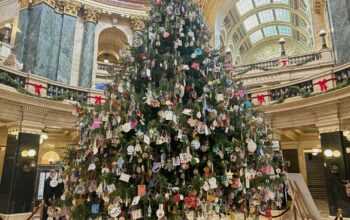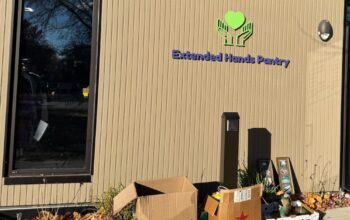Boldly tell the story of the diversity and magnitude of the human experience. Seek sources whose voices we seldom hear.
American journalists are familiar with the values intertwined in the line above, which is also one of the core tenets of the Society of Professional Journalists Code of Ethics. However, incorporating new and unique sources into diverse stories can be challenging in modern newsrooms where journalists are strapped for time and resources.
On February 9 and 10, journalists from around the world gathered at the Wisconsin Institute of Discovery for the conference “Cultures in Conflict: Navigating Cultural Difference in International Human Rights Reporting” to discuss how exactly to integrate diverse stories and amplify silenced or forgotten voices into news coverage.
Panelists and keynote speakers shared their experiences covering other cultures and global issues. But the lessons they learned in their reporting don’t apply strictly to international human rights coverage – journalists in Madison can apply the same strategies and values to their own work in the local community.
A primary theme that arose during the conference was how journalists can share voices of those who are seldom heard.
Jane Onyanga-Omara, world news reporter and digital editor for USA Today, emphasized the importance of representing those directly affected by community issues. Instead of seeking official sources or authorities on a subject, journalists in Madison should strive to engage with community members and amplify the voices of those with lived, firsthand experience.
Onyanga-Omara recommended utilizing social media platforms to search for new perspectives and narratives. Searching hashtags, key words or trending topics on Twitter, or joining community-based groups on Facebook can lead journalists to stories that might have gone uncovered otherwise.
Adriana Loureiro Fernández, a Venezuelan photojournalist, searches for ways to empathize with her subjects who share their raw, unfiltered emotions with her. She doesn’t fear sharing her emotions with subjects and sources, either.
“To be able to represent [others], you have to be present, you have to know where you are and you have to really bewhere you are,” Fernández said.
Fernández and Garcia-Navarro maintained respect as another key to engaging communities and forging relationships. Populations whose voices are frequently stifled potentially already feel oppressed or forgotten by those in power, but journalists can use the function of their work to give power and narrative control back to omitted populations.
“If you are respectful – if you are there trying to really understand – then people will open up and want to share their story without feeling that you’re being predatory,” Garcia-Navarro said.
Actively seeking diverse sources, amplifying forgotten voices and empathizing with sources to tell their unique story are starting points to forging relationships with local communities and shedding light on issues they face.
Engaging communities – from before, throughout and beyond the reporting process – can not only diversify news coverage, but also bring new perspectives and ideas to audiences and local journalists, alike.
But panelists, keynote speakers and attendees agreed seeking the truth in the human experience and accurately reporting it is more important than ever in an era of disinformation.
“If you’ve done thoughtful work, the truth is always enough,” Fernández said.




